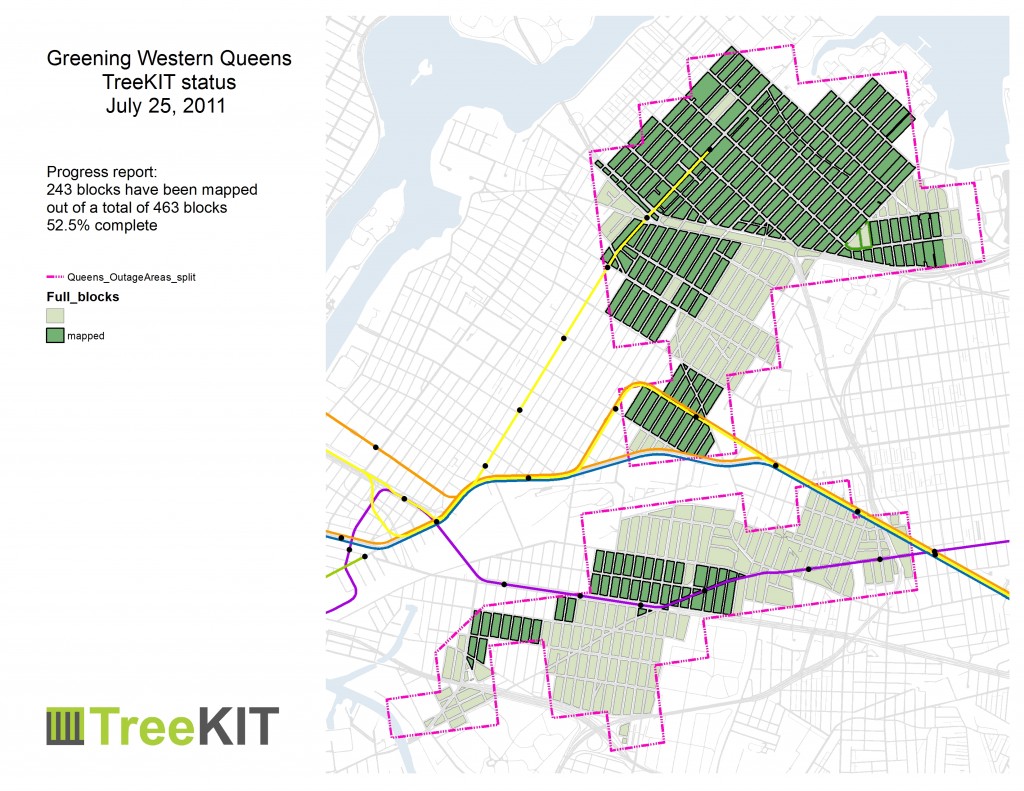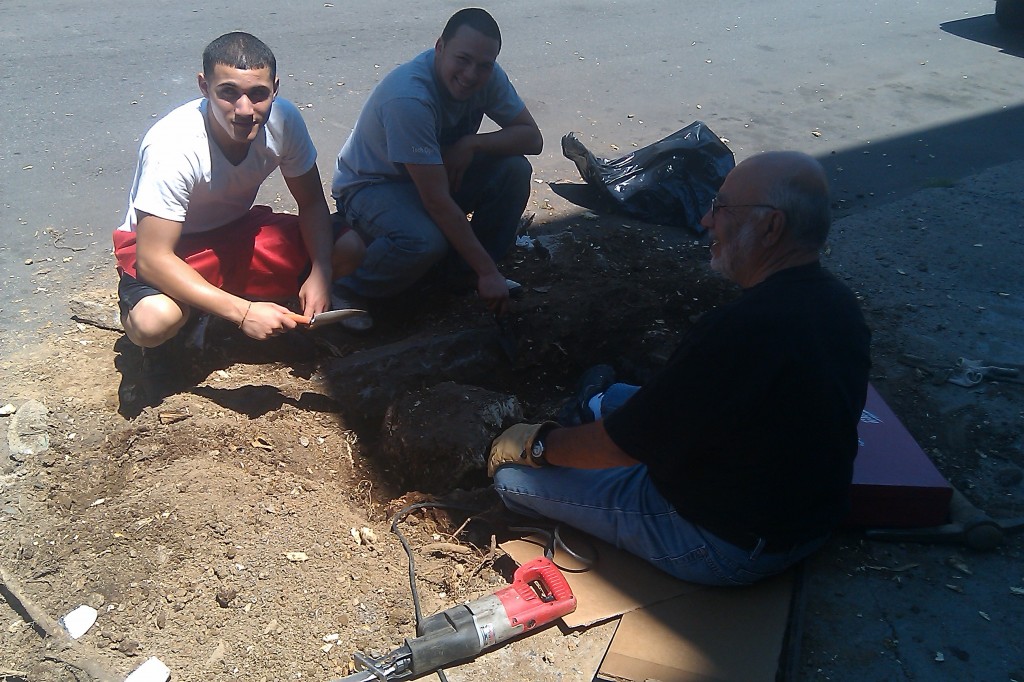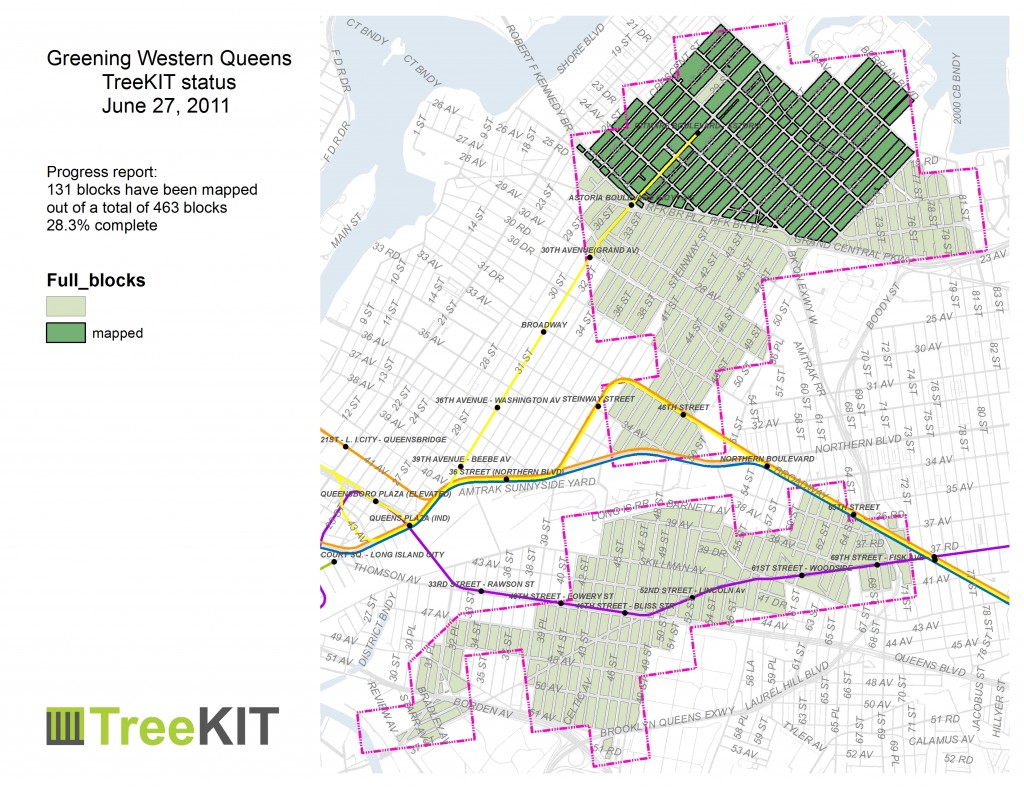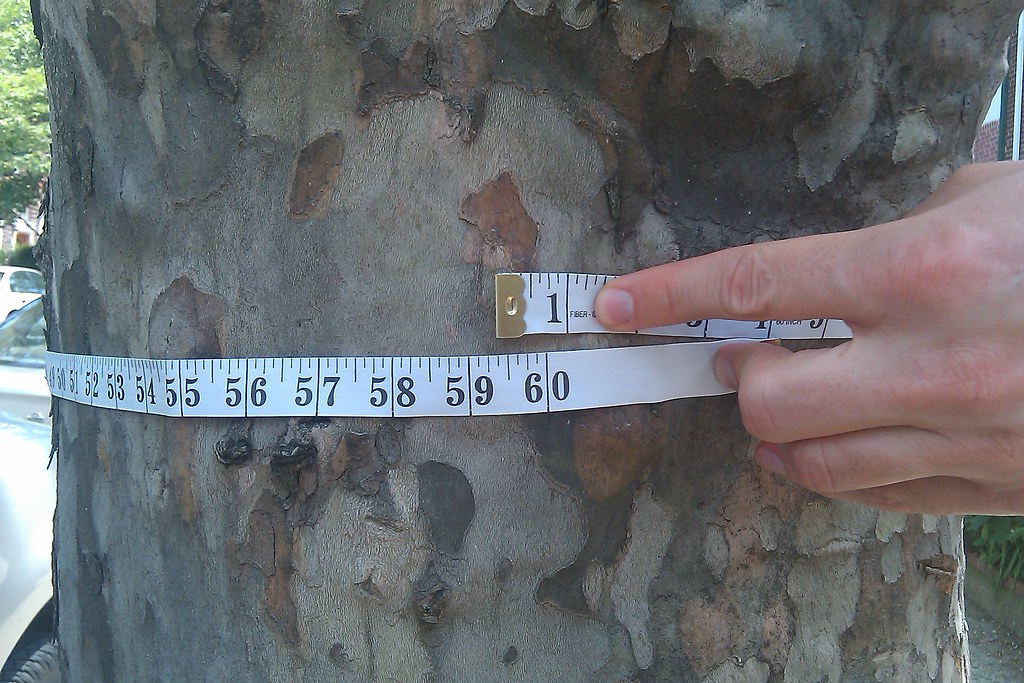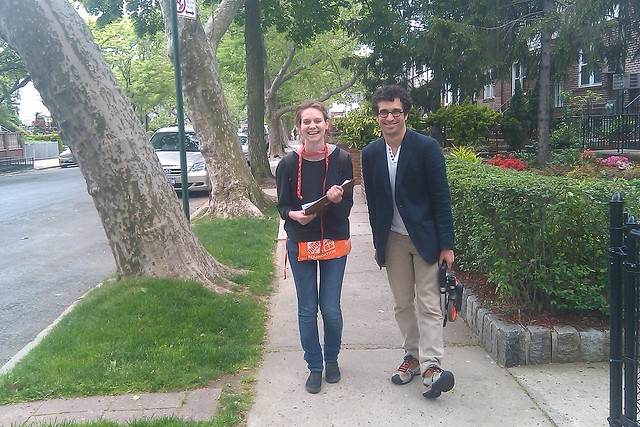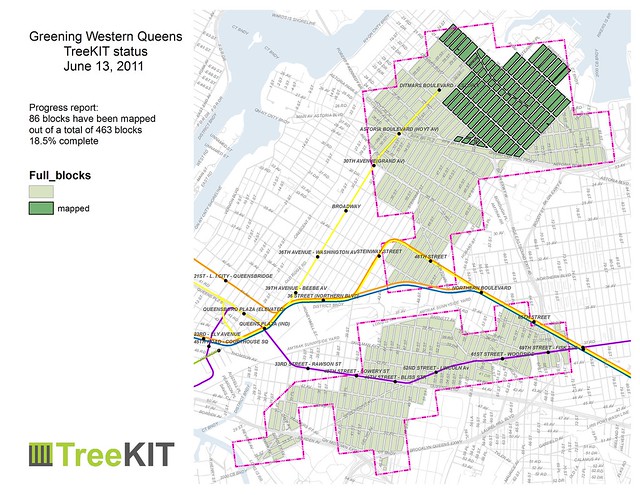Welcome back to tree mapping in Western Queens! Our first weekend out on the street was incredibly productive, with more than 20 blocks mapped (see the productivity map below). A bit THANK YOU to all of our wonderful volunteers for starting the autumn mapping season with such a great day.
Queens update July 25
Greening Western Queens update July 12
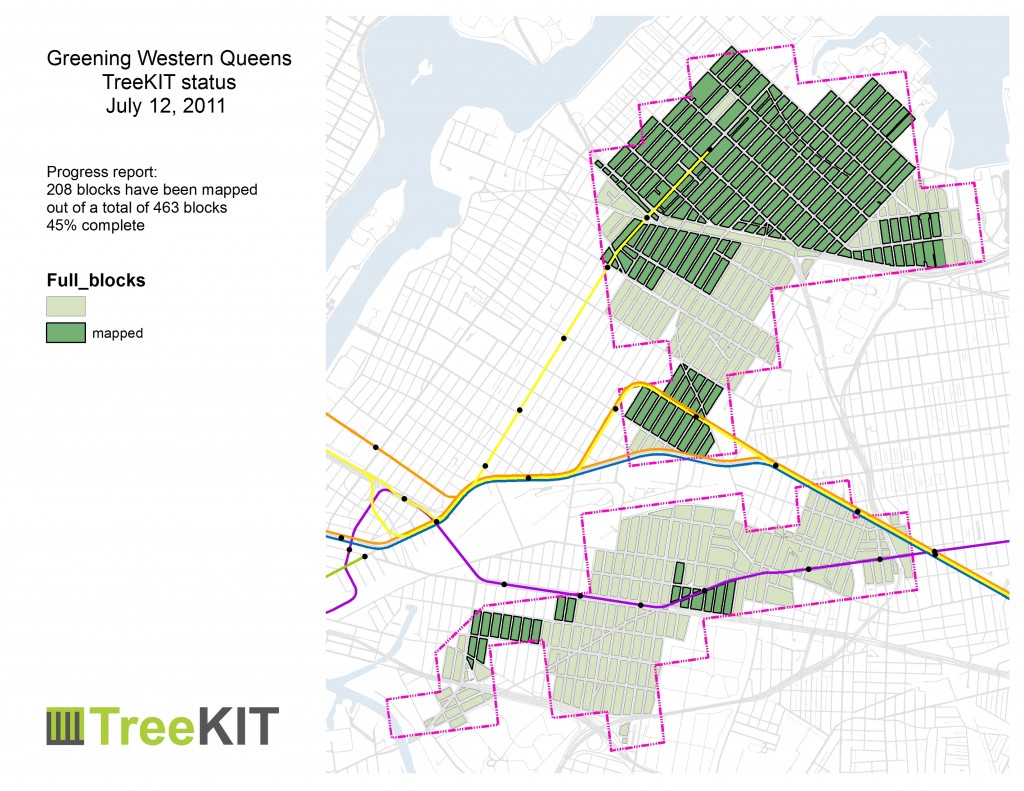 Lots of new groups braved the hot hot heat in the last few weeks. See the map for the “toeholds” started across Sunnyside and Woodside. Groups included the NYC Department of Health – Queens Plaza building, NYC Parks – Central Forestry, NYC Parks – Sustainable Parks, and the MilliontreesNYC program team. The July 9th kick-off event spearheaded by Partnership for Parks near the 42nd Street R/M subway station raised awareness among community residents about how they can get involved with the many initiatives that are part of Greening Western Queens.
Lots of new groups braved the hot hot heat in the last few weeks. See the map for the “toeholds” started across Sunnyside and Woodside. Groups included the NYC Department of Health – Queens Plaza building, NYC Parks – Central Forestry, NYC Parks – Sustainable Parks, and the MilliontreesNYC program team. The July 9th kick-off event spearheaded by Partnership for Parks near the 42nd Street R/M subway station raised awareness among community residents about how they can get involved with the many initiatives that are part of Greening Western Queens.
Stump Removal Backlog (pun intended)
It can be tricky to plant a new tree if there’s a stump in the way. These intrepid homeowners in Bushwick are doing it themselves, helping (un)pave the way to get a new tree planted. Continue reading
Greening Western Queens: 4th of July
Greening Western Queens update
Vice Magazine exposé on Prospect Heights tree vandalism
Thriving in Astoria
Greening Western Queens update
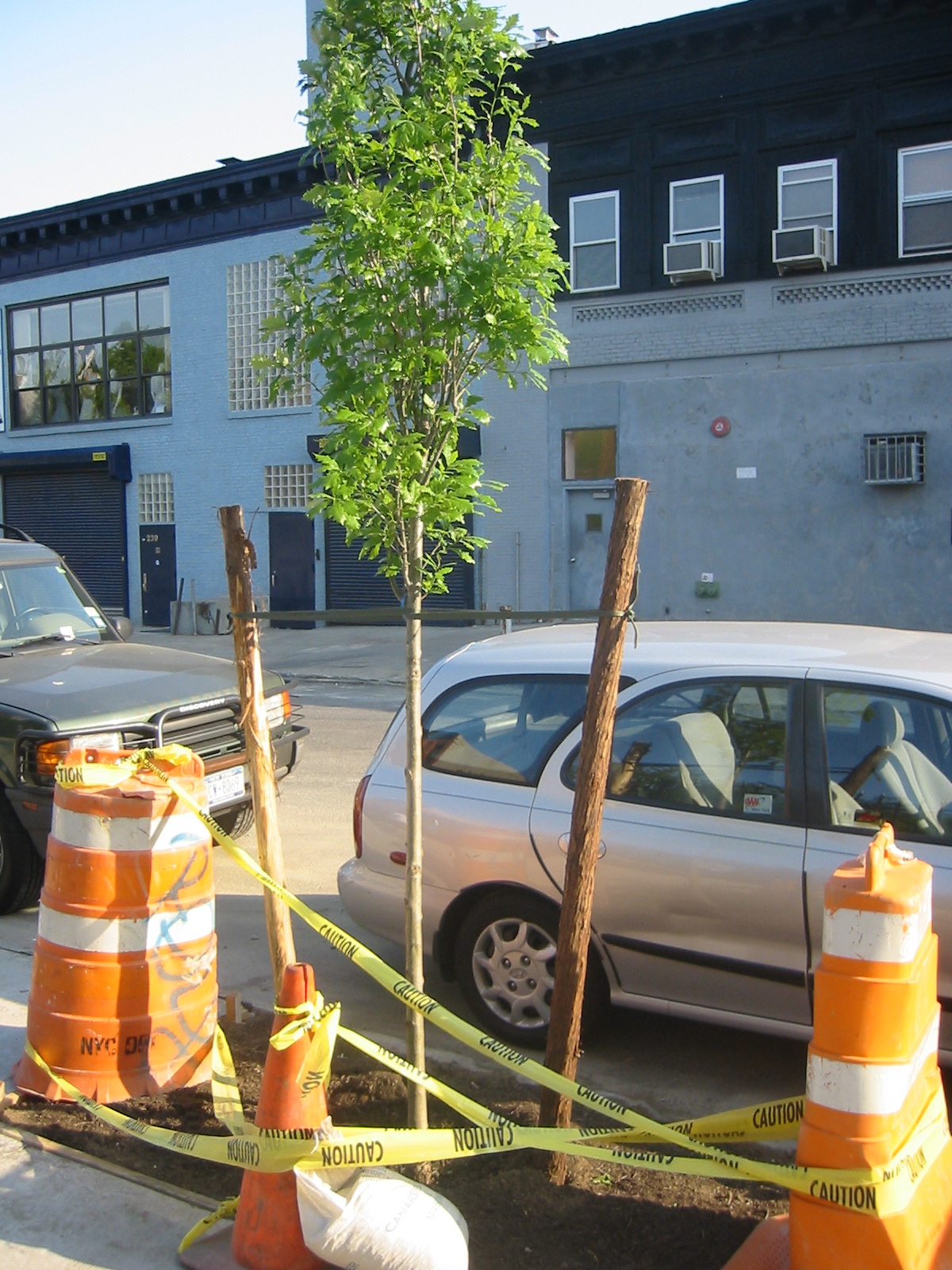 After participating in the Vibrant Cities & Urban Forests Task Force last week, we’ve been thinking a lot about the connections between TreeKIT projects and other urban forestry initiatives throughout the country. One link that keeps coming up involves research and scholarship around urban ecosystems.
After participating in the Vibrant Cities & Urban Forests Task Force last week, we’ve been thinking a lot about the connections between TreeKIT projects and other urban forestry initiatives throughout the country. One link that keeps coming up involves research and scholarship around urban ecosystems.
As a “citizen” or “street” science project, we aim to develop methods of collecting data on the urban forest that reflect ideas and insights in cutting-edge urban ecosystem research. So we’re very pleased to have come across this passage in a groundbreaking 2008 journal article on “community-based urban land management” by Erika Svendsen and Lindsay Campbell of the US Forest Service :
“…there remains a great deal of work to be done in the coordination of urban ecosystem management. This is not to suggest that all management in cities should be centralized, but [our] findings suggest the need to recognize and harness the degree of diversity, autonomy and effectiveness among public and private sector stewardship regimes.”
TreeKIT’s approach to measuring, mapping, and managing the urban forest draws deep inspiration from research projects like this one. Our aim is to develop an interactive, web-based map of street trees in New York City that helps volunteers, non-profits, and government agencies coordinate and collaborate without a central authority managing their work.
Interested in learning more? Send us your information and let us know if you’d be interested in mapping street trees in NYC this summer. We’ll need your help to build the kinds of maps we’re dreaming of!


